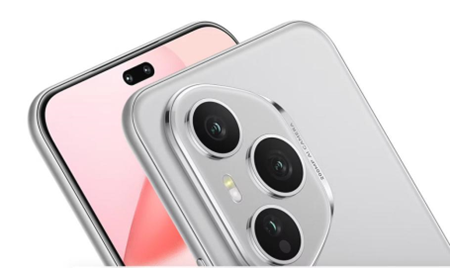Modern smartphones carry powerful cameras in our pockets, yet many of us stick to the default auto mode. Understanding a few key settings can dramatically transform your photos from simple snapshots into stunning images. You don't need to be a professional photographer to grasp these concepts; they are designed to be accessible and incredibly practical for everyday use. Whether you're capturing a family dinner, a day at the park, or a beautiful sunset, a little knowledge goes a long way. In this article, we will explore essential camera settings and features to help you take full control of your mobile photography.

Resolution and Aspect Ratio Basics
Megapixels (MP) vs. Practical Quality
Many people believe that a higher megapixel count automatically means a better picture, but the reality is more nuanced. Megapixels determine the potential detail in an image, but the sensor size and software processing are equally crucial for final quality. For instance, a phone like the HONOR 400 Pro uses a massive main sensor, which captures an incredible amount of detail, allowing you to crop photos heavily without losing clarity. However, for everyday social media sharing, a standard 12MP shot is often more than sufficient and saves storage space. The key is to use high-resolution mode for important shots where you might want to print or crop later, and stick to standard settings for daily memories.
4:3, 16:9, or Full Screen? Choosing the Right Frame
The aspect ratio setting changes the shape and composition of your photographs, which can significantly impact how they look. The 4:3 ratio is the standard for most phone sensors, using the maximum available area to capture the scene, and is generally the best choice for most photography. The 16:9 ratio gives a wider, more cinematic look, perfect for landscapes, but it actually crops the top and bottom of the 4:3 image. The full-screen ratio matches your phone's display, but it crops the sides, potentially losing valuable information. For the greatest flexibility, shoot in the standard 4:3 ratio; you can always crop it to a different format later without sacrificing your original composition.
Night Mode and Low-Light Shooting
Low-light photography was once a major challenge for smartphones, but Night Mode has revolutionized our ability to capture clear images after dark. This feature works by taking multiple photos at different exposure levels in quick succession and then blending them together into a single, well-lit, and sharp image. It automatically reduces noise and brightens shadows while preserving highlights, making city lights and evening scenes look vibrant. The effectiveness of Night Mode depends heavily on computational power and a capable sensor, which gathers more light. For best results, simply enable Night Mode in your camera app, hold your phone steady for a few seconds, and let the software work its magic.
Portrait Mode and Background Blur
Portrait Mode is a fantastic tool for creating professional-looking photos with a beautifully blurred background, making your subject stand out. This effect, known as bokeh, is achieved through a combination of hardware and software that identifies the subject and artificially blurs the backdrop. The quality of this blur depends on the camera's ability to cleanly separate the subject from the background. Some devices enhance this with a dedicated 50MP telephoto camera, which is often better for flattering portrait framing and adding natural depth. Remember to use this mode in good lighting and to experiment with different levels of blur intensity in the settings to find what looks most natural for each shot.
Video Settings for Smooth Footage
Resolution (4K, 1080p) and Frame Rate (30fps, 60fps)
Choosing the right video settings ensures your memories are captured smoothly and with the detail you desire. Resolution defines the sharpness, with 4K offering four times the detail of 1080p Full HD, ideal for watching on large TVs, but it consumes much more storage. Frame rate, measured in frames per second (fps), affects how smooth motion appears; 30fps is standard, while 60fps delivers incredibly smooth motion perfect for action scenes. For most users, recording in 1080p at 30fps provides a great balance of quality and file size for videos shared online. Reserve 4K and higher frame rates for special occasions or when you plan to do some professional-style editing on your computer.

Stabilization (OIS/EIS) for Shake-Free Clips
There is nothing worse than a shaky, unwatchable video, and this is where stabilization technologies save the day. Optical Image Stabilization (OIS) is a hardware feature that uses tiny motors to physically move the camera lens to counteract hand shake. Electronic Image Stabilization (EIS) is a software solution that slightly crops the video frame and uses algorithms to smooth out the motion. The most effective systems combine both, like the OIS found on the main and telephoto cameras, which works seamlessly with EIS for buttery-smooth footage even while walking. For the steadiest results, ensure these features are enabled in your video settings, and you will notice a massive improvement in your daily clips.
Conclusion
The journey to becoming a better smartphone photographer is all about experimentation and understanding the tools at your disposal. Do not be afraid to venture out of the auto mode and try different settings like Night Mode for evenings or Portrait Mode for family photos. Each setting we've discussed is a powerful tool designed for specific scenarios, and using them effectively will instantly elevate your photo gallery. Remember that the best camera is the one you have with you, and today's phones are more capable than ever. Take your time, practice with these features, and most importantly, have fun capturing your world in new and creative ways.
